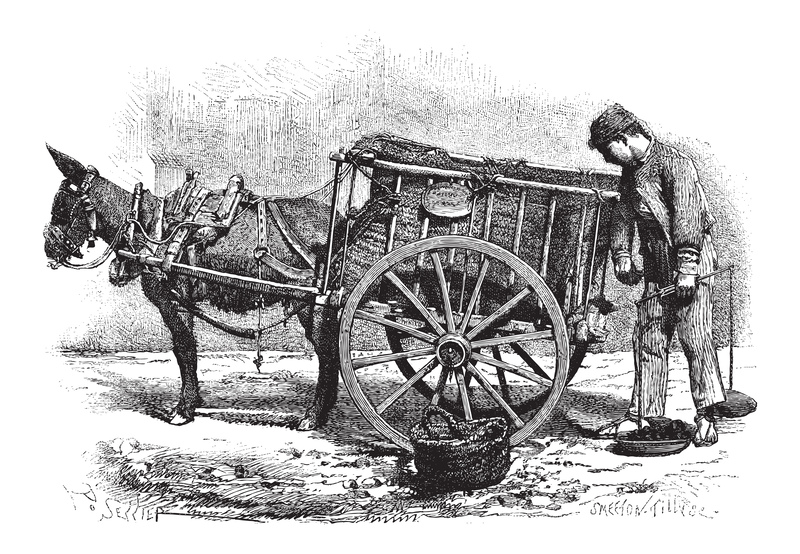Urban Centers with the Worst Environmental Conditions
Posted on 03/08/2024
Urbanization has been a global trend for decades, with millions of people flocking to cities in search of better opportunities. While this phenomenon has brought about economic growth and progress, it has also led to the creation of urban centers with some of the worst environmental conditions. The concentration of people, industries, and transportation in these areas has resulted in severe pollution and degradation of natural resources. In this article, we will explore the causes, effects, and possible solutions to address the issue of urban centers with poor environmental conditions.
Causes of Poor Environmental Conditions in Urban Centers
1. Population Growth: One of the primary factors contributing to poor environmental conditions in urban centers is rapid population growth. The ever-increasing number of people migrating to cities has put tremendous pressure on already limited resources, leading to overconsumption and pollution.
2. Industrialization: The rise of industries in urban centers has significantly contributed to air, water, and noise pollution. These industrial activities release harmful substances such as carbon monoxide, sulfur dioxide, and nitrogen oxides into the environment, causing respiratory illnesses and other health problems.
3. Transportation: The high number of vehicles on the road in urban centers is another significant contributor to poor environmental conditions. The emissions from cars and trucks contribute significantly to air pollution, while noise pollution from traffic affects the quality of life for residents.
4. Improper Waste Management: With a high population density comes an increase in waste generation. In many urban centers, waste management systems are inadequate or nonexistent, leading to improper disposal of garbage and hazardous waste. This not only pollutes the environment but also poses a threat to public health.

Effects of Poor Environmental Conditions in Urban Centers
1. Health Problems: The poor environmental conditions in urban centers can have severe consequences on public health. Air pollution from industries and transportation can cause respiratory diseases such as asthma and lung cancer. Contaminated water and improper waste management can lead to the spread of diseases such as cholera, dysentery, and hepatitis.
2. Degradation of Natural Resources: The rapid pace of urban development often results in the destruction of natural habitats and green spaces. This not only impacts biodiversity but also affects the quality of air and water.
3. Climate Change: Urban centers contribute significantly to global warming due to their high carbon footprint. The excessive use of fossil fuels for transportation and industrial activities releases greenhouse gases into the atmosphere, contributing to climate change.
Possible Solutions to Address Poor Environmental Conditions in Urban Centers
1. Sustainable Urban Planning: To create more livable, healthy, and environmentally-friendly cities, there needs to be a shift towards sustainable urban planning. This involves designing cities that are walkable, bike-friendly, and have efficient public transportation systems. It also includes incorporating green spaces, such as parks and gardens, into urban landscapes.
2. Promoting Green Energy: Cities can reduce their carbon footprint by promoting the use of renewable energy sources such as solar and wind power. Governments can provide incentives for individuals and businesses to switch to clean energy sources.
3. Proper Waste Management: An effective waste management system is crucial for maintaining a clean environment in urban centers. This includes proper collection, recycling, and disposal of waste materials.
4. Strict Regulations on Industries: Governments should implement strict regulations on industries to limit their emissions and ensure proper waste disposal practices.
Pros and Cons
Pros:
- Improved public health
- Reduced pollution levels
- Preservation of natural resources
- Mitigation of climate change
Cons:
- Costly implementation
- Resistance from industries
- Changes in lifestyle may be required
Tips
1. Opt for public transportation or choose eco-friendly modes of transportation like walking or biking instead of driving a car.
2. Support local businesses that prioritize sustainability and use eco-friendly practices.
3. Reduce, reuse, and recycle to minimize waste generation.
4. Educate yourself and others about the importance of sustainable living.

Takeaways
1. Urbanization has led to the creation of urban centers with some of the worst environmental conditions.
2. Rapid population growth, industrialization, transportation, and improper waste management are primary contributors to poor environmental conditions in urban centers.
3. The effects of poor environmental conditions in urban centers include health problems, degradation of natural resources, and climate change.
4. Sustainable urban planning, promoting green energy, proper waste management, and strict regulations on industries are potential solutions to address this issue.
Conclusion
The growing number of urban centers with poor environmental conditions is a pressing global issue that needs urgent attention. By implementing sustainable practices and regulations, we can create cities that are livable and healthy for both current and future generations. It is crucial for governments, industries, and individuals to work together towards creating a more sustainable future in our urban centers. Let us take action now before it's too late.
